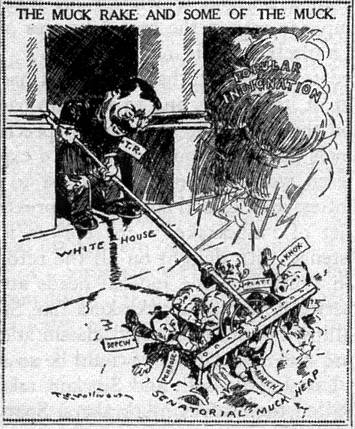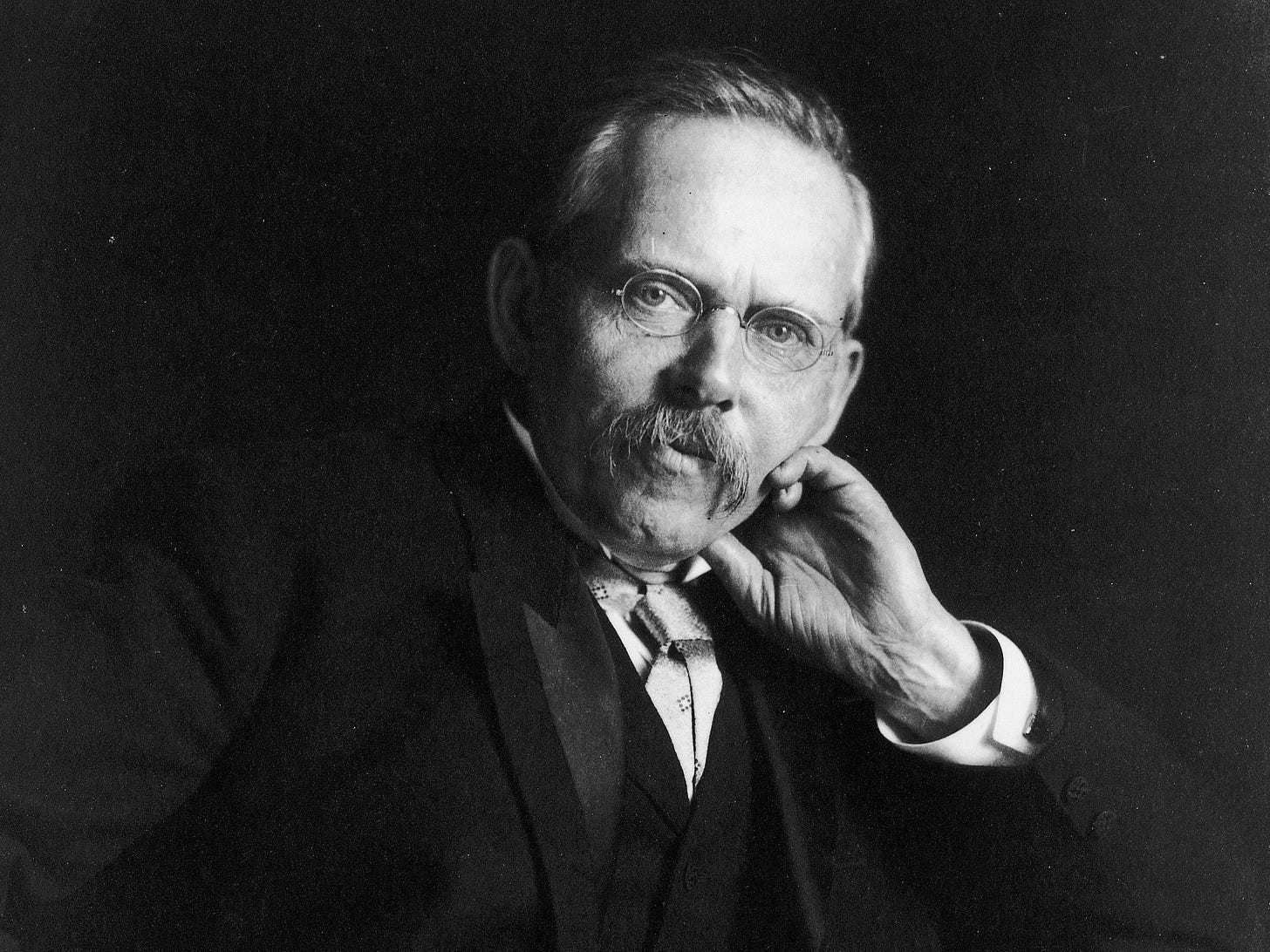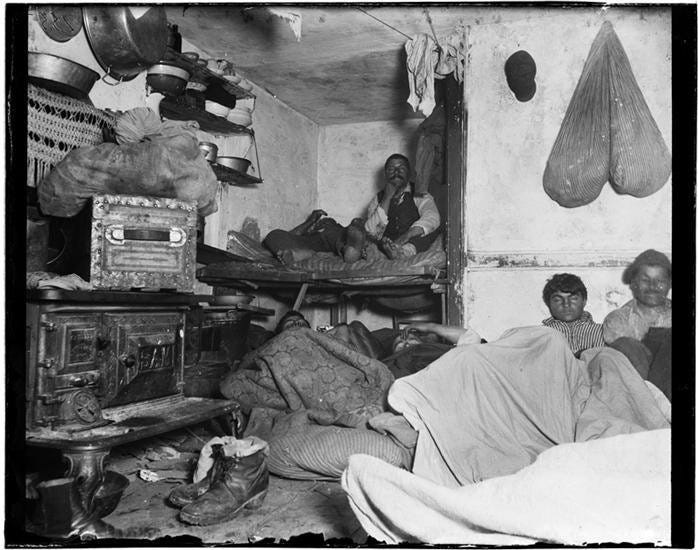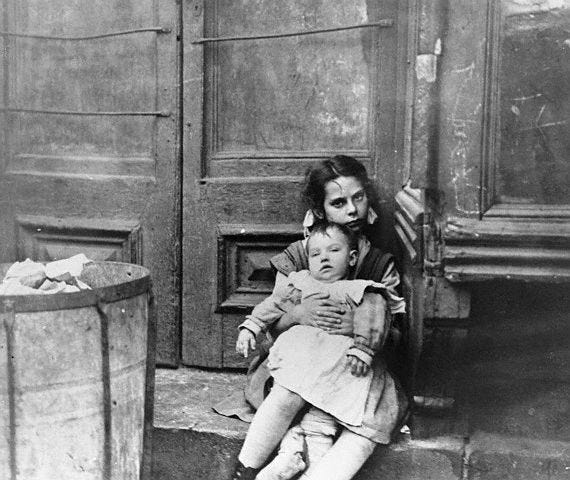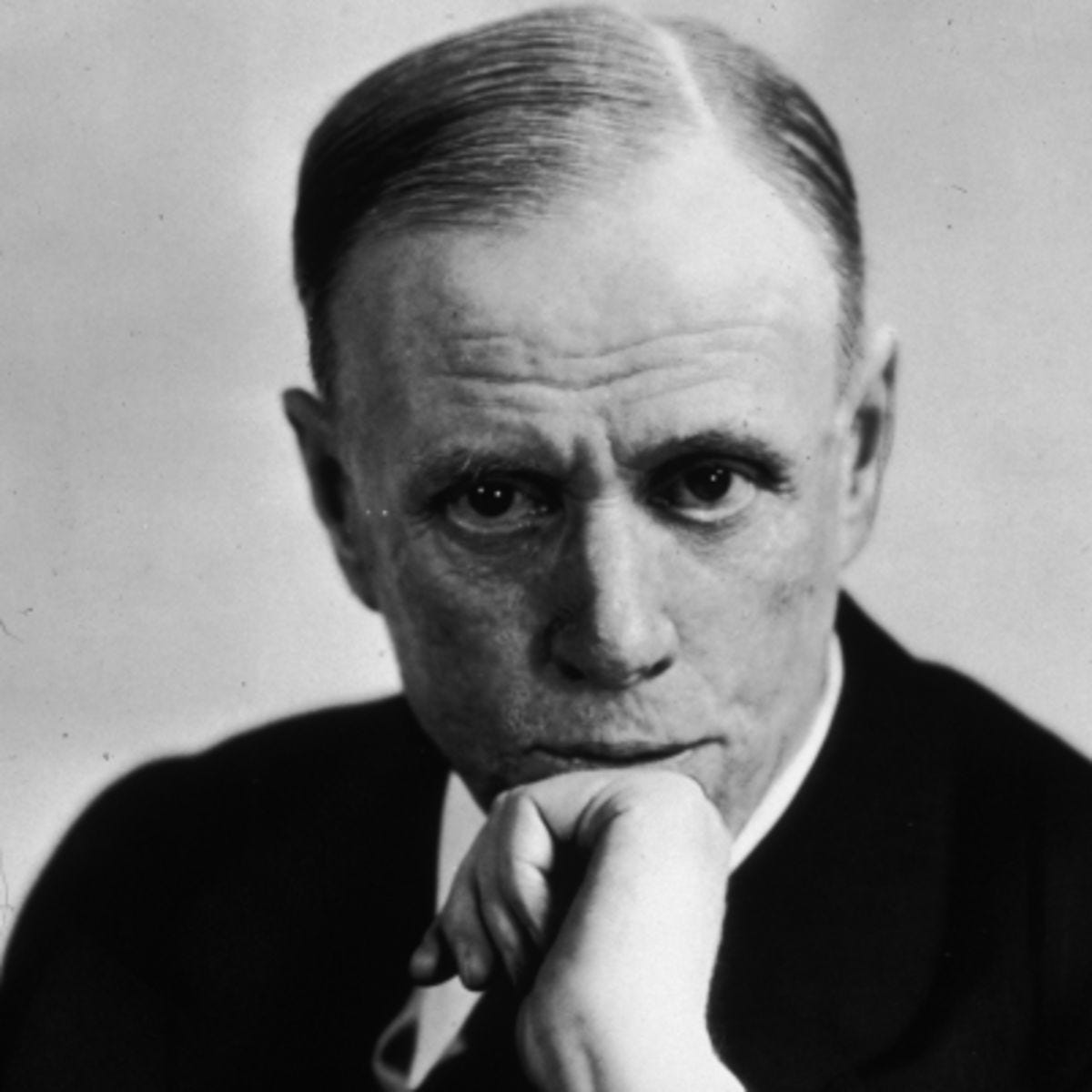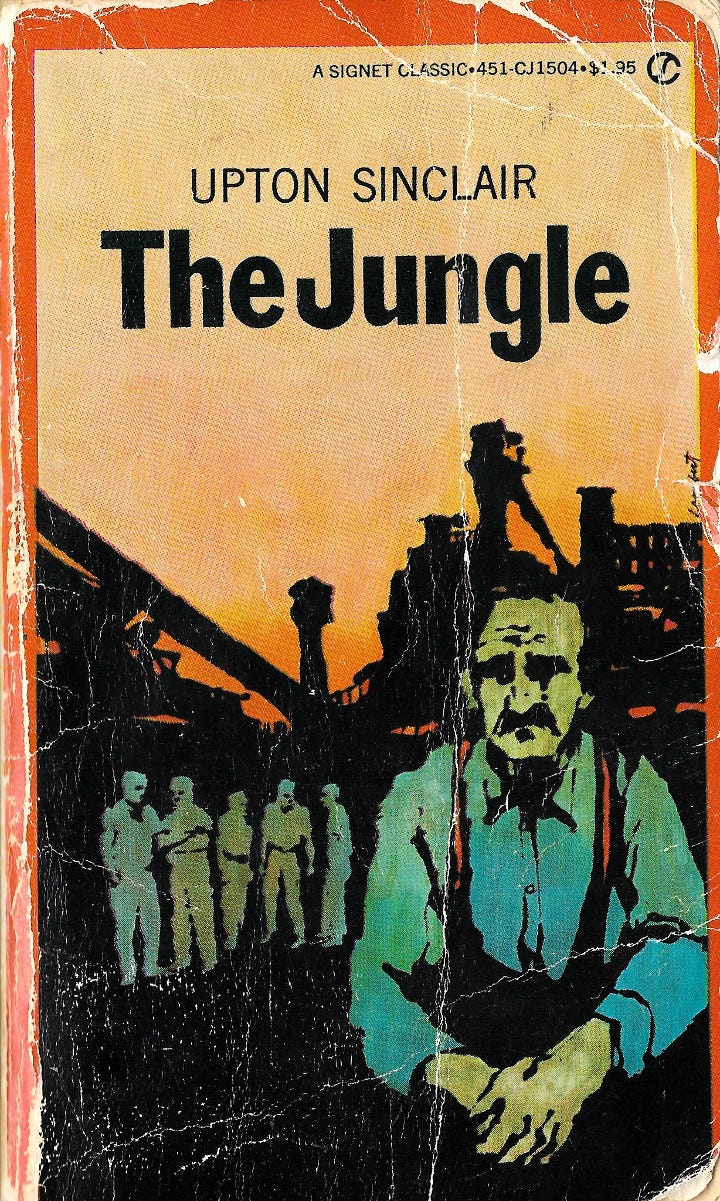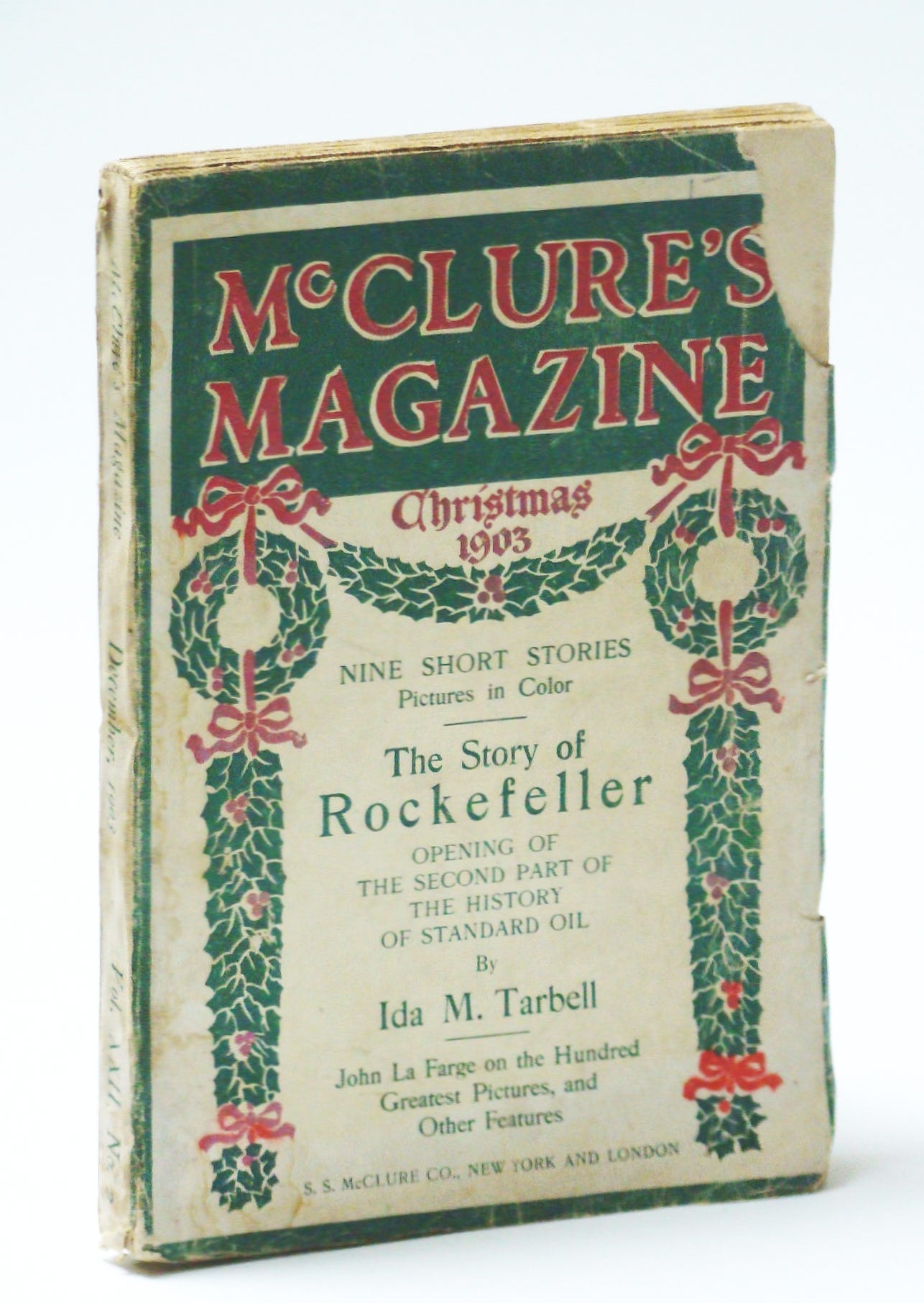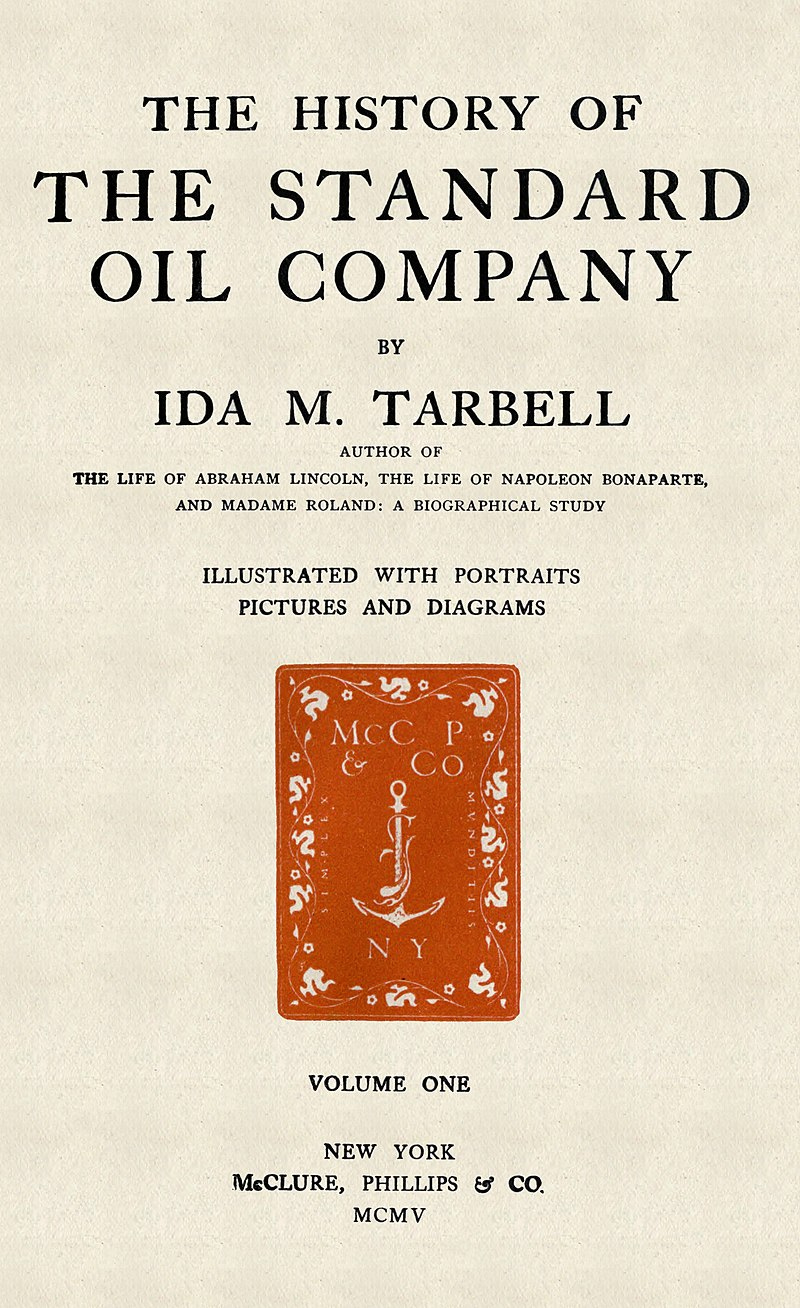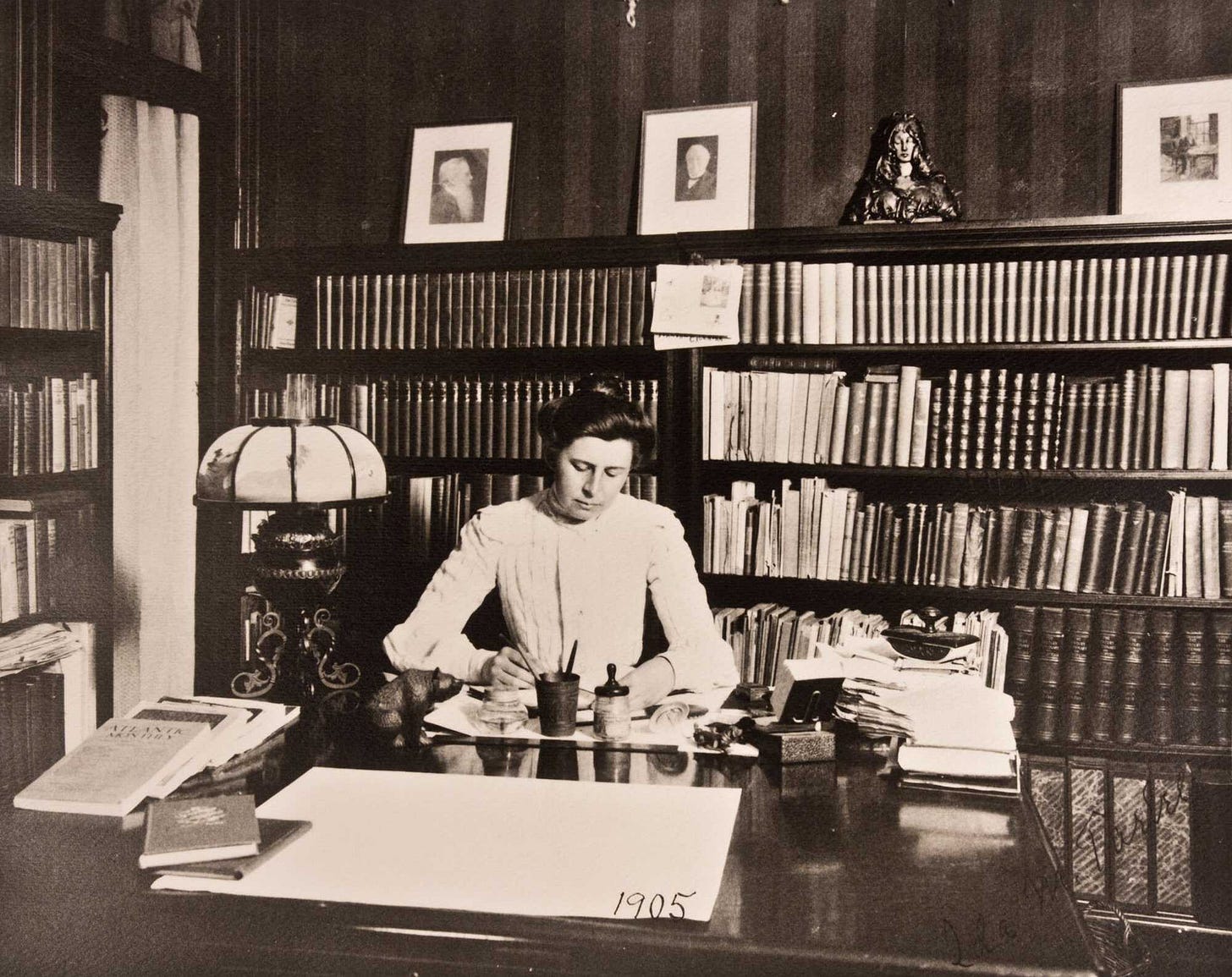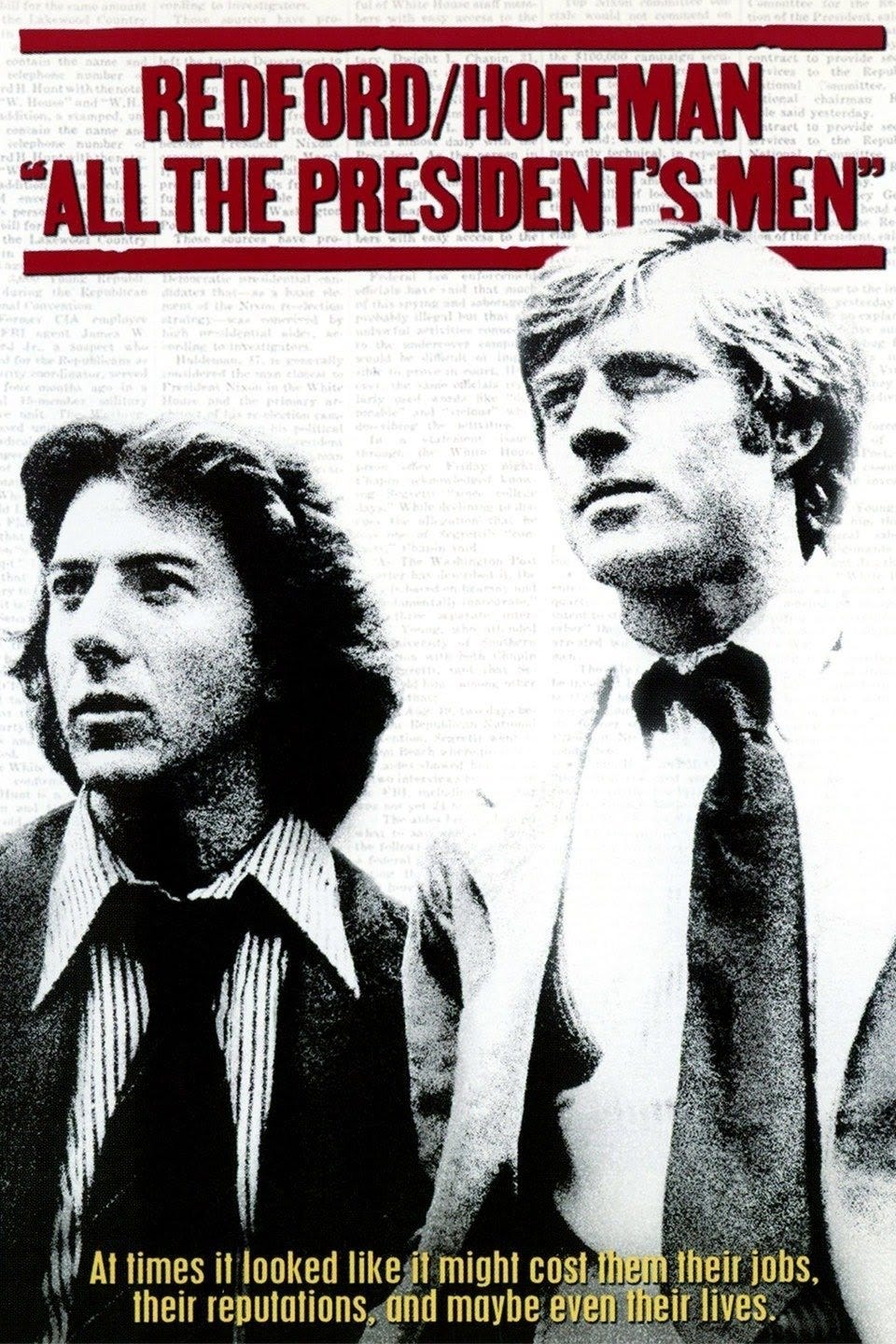The Progressive Era in early twentieth century America before World War I, saw continuous reforming activity. But before there could be action, there needed to be information about some grievance brought before the public eye. A new kind of journalism supplied this, a journalism called muckraking. Muckraking was investigative journalism exposing corruption, evil business practices, and the miserable living conditions of the impoverished.
President Theodore Roosevelt, in a 1906 speech, referred to a character in John Bunyan’s allegory The Pilgrim’s Progress. The character constantly looked down and raked the muck on the floor, not even stopping to receive the crown he was offered. Roosevelt was saying that the country needed this new breed of investigative muckraking journalists.
Journalism and newspapers had long been part of information flow in the United States, but muckraking journalism was bigger and more sensational than anything that had been done before. New periodicals like McClure’s Magazine popped up to print just this kind of journalism.
Subscription rates boomed generating plenty of money for the work, and the reach was nationwide. Some of the muckraking exposure was printed in periodicals. Some was written as novels. And some used photography. Most everyone of the time knew that all was not well in the nation. Muckraking gave them the names and faces, facts and pictures that reformers could act upon.
In the short space that I have, I will share three muckraking examples and the reforms that resulted.
Jacob Riis used flash photography to chronicle urban living conditions of poverty and misery. He published a book in 1890 with his photographs titled How the Other Half Lives. The book inspired housing reform on a national scale and inspired other photographic journalism exposing the cruelties of poverty.
Two of his many photographs:
Upton Sinclair wrote muckraking novels. His most famous novel, The Jungle, in 1906, exposed the dangerous and unsanitary conditions in the meatpacking industry. Learning about how unsanitary their meat was, his book’s readers created a public uproar. The book and the response to it contributed to the passage of the Pure Food and Drug Act and the Meat Inspection Act. I read this book many years ago, and I still remember my own horror at the conditions he described!
A final example is Ida Tarbell, a pioneer in investigative journalism. Her most famous work profiled Rockefeller’s Standard Oil Company. She published a series of articles between 1902 and 1904 in McClure’s Magazine and published it as a book titled The History of the Standard Oil Company in 1904. Her work exposed corrupt, monopolistic business practices.
She approached her journalistic research in a brand-new way. She examined hundreds of thousands of pages of documents and interviewed company executives, competitors, and experts to gather the full story about Standard Oil business practices.
We are accustomed to this kind of journalism, but back in 1902, Ida Tarbell was doing something new. And her muckraking also led to reform. Standard Oil was broken up as a monopoly, and anti-monopoly laws were enacted.
Many of us remember a later twentieth century example of muckraking investigative journalism when Bob Woodward and Carl Bernstein exposed the Nixon administration involvement in the Watergate scandal which led to Nixon's resignation.
I enjoy movies about investigative journalism! Here is a short list of ones I rewatch:
The Insider
The Killing Fields
Spotlight
The Post
State of Play
All the President’s Men




